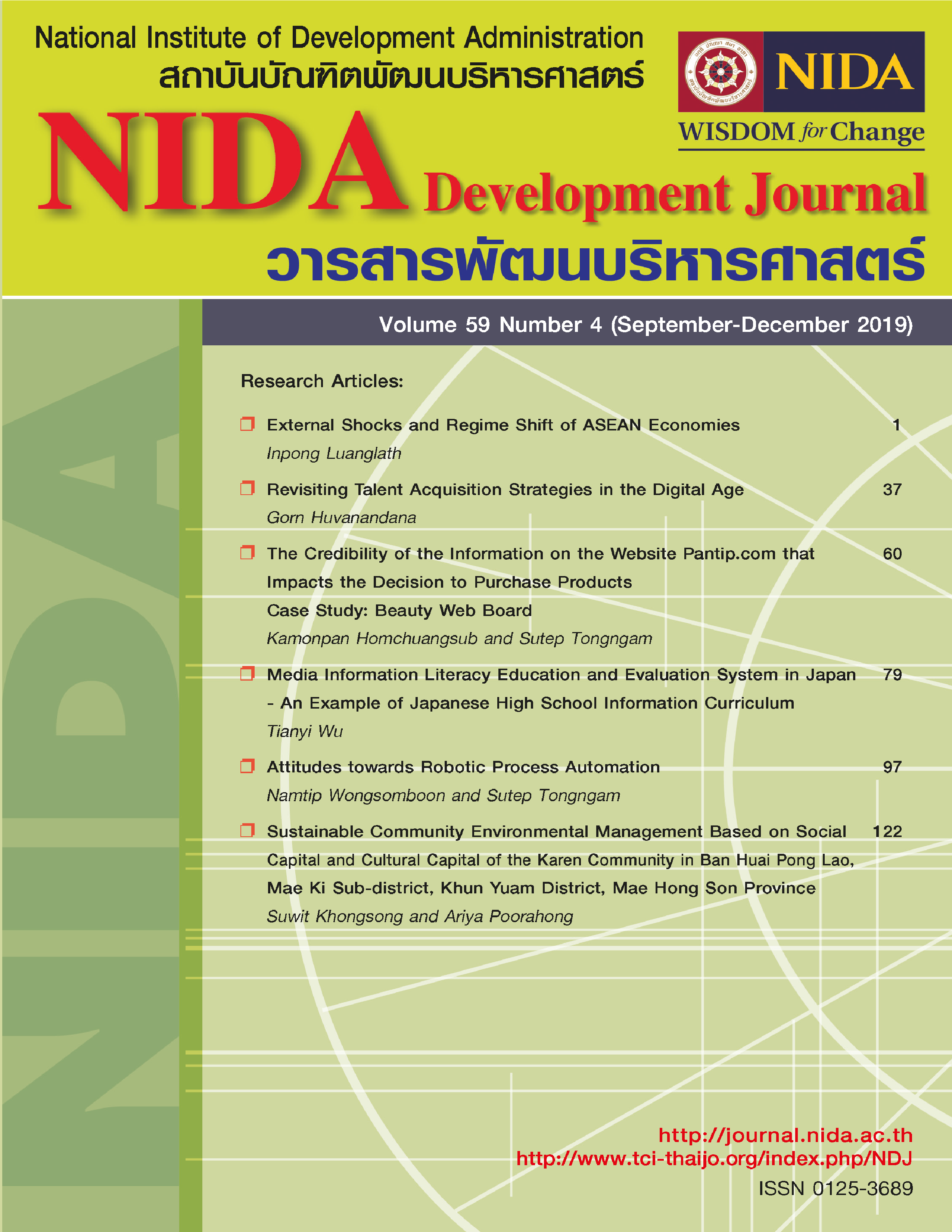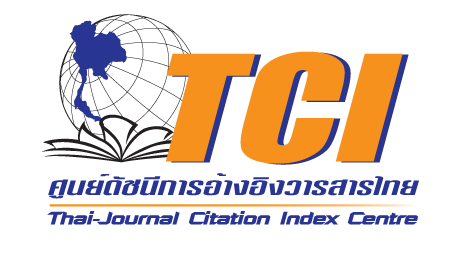Revisiting Talent Acquisition Strategies in the Digital Age
Keywords:
Recruitment and selection, Talent management, Talent Acquisition, Digital era, Talent strategies, Employer brandingAbstract
The digital era has revolutionized talent acquisition practices, offering organizations new opportunities and challenges in attracting and selecting top talent. This paper provides an in-depth examination of talent acquisition in the digital era, focusing on the intersection of technology, recruitment strategies, and candidate experiences. By synthesizing academic literature and organizational practices, it highlights emerging trends, debates, and issues in talent acquisition. The paper begins by discussing the transformative impact of digital technologies on talent acquisition. It explores how organizations are leveraging technologies such as artificial intelligence, machine learning, and big data analytics to streamline recruitment processes, enhance candidate assessment, and improve decision-making. However, it also raises concerns regarding the ethical implications such as biases and transparency associated with these technologies. It also emphasizes the importance of crafting a strong employer brand image and leveraging digital platforms to attract and engage candidates. The challenges and opportunities of employer branding in the digital era are examined, including the need for authentic storytelling, employer brand consistency, and the impact of social media on candidate perceptions. The importance of diversity and inclusion in digital talent acquisition is also addressed. It highlights the potential biases embedded in algorithm-based recruitment and selection tools and stresses the need for fair and inclusive acquisitional practices. The role of digital platforms in widening access to diverse talent pools is explored, along with strategies for mitigating biases and promoting equal opportunities. Moreover, the paper discusses the impact of the COVID-19 pandemic on talent acquisition. It examines the shift towards remote hiring, virtual onboarding practices, and the challenges of maintaining organizational culture and candidate experience in a virtual environment. The paper underscores the need for further research on the long-term effects of the pandemic on talent acquisition strategies. It highlights the opportunities and challenges faced by organizations and presents potential future research directions to optimize talent acquisition strategies, enhance candidate experiences, and foster inclusive and equitable recruitment practices in the digital age. The paper identifies several future research directions to advance the field of talent acquisition in the modern era. These include exploring the effectiveness of digital recruitment methods, evaluating the ethical implications of technology-driven practices, and investigating the role of artificial intelligence in candidate assessment.
References
Allen, T. D., Golden, T. D., & Shockley, K. M. (2013). How effective is telecommuting?
Assessing the status of our scientific findings. Psychological Science in the Public Interest, 16(2), 40-68.
Ambler, T., & Barrow, S. (1996). The employer brand. Journal of Brand Management, 4(3),
-206.
Autor, D. (2009). Studies of labor market intermediation: Introduction. In D. Autor (Ed.), Studies
of labor market intermediation (pp. 1-26). University of Chicago Press.
Backhaus, K., & Tikoo, S. (2004). Conceptualizing and researching employer branding. Career
Development International, 9(5), 501-517.
Bagues, M., & Sylos Labini, M. (2009). Do online talent intermediaries matter? The impact of
Alma Laurea on the university-to-work transition. In D. Autor (Ed.), Studies of labor market intermediation (pp. 127-154). University of Chicago Press.
Barber, A. E. (1998). Recruiting employees: Individual and organizational perspectives.
Thousand Oaks, CA: Sage Publications.
Barrow, S., & Mosley, R. (2005). The employer brand: Bringing the best of brand management
to people at work. Hoboken, NJ: John Wiley & Sons.
Bayo-Moriones, A., & Ortin-Angel, P. (2006). Internal promotions versus external recruitment in
industrial plants in Spain. Industrial and Labor Relations Review, 59, 451-470.
Becker, G. S. (1962). Investment in human capital: A theoretical analysis. Journal of Political
Economy, 70(5), 9-49.
Becker, G. S. (1993). Human capital; a theoretical and empirical analysis with special reference
to education. University of Chicago Press.
Bidwell, M. (2013). What happened to long term employment? The role of worker power and
environmental turbulence in explaining declines in worker tenure. Organization Science, 24, 1061-1082.
Bidwell, M. (2017). Managing talent flows through internal and external labor markets. In D. G.
Collings, K. Mellahi, & W. F. Cascio (Eds.), The Oxford handbook of talent management (pp. 281-298). Oxford University Press.
Bidwell, M., & Briscoe, F. (2010). The dynamics of interorganizational careers. Organization
Science, 21, 1034-1053.
Bidwell, M., & Mollick, E. (2015). Shifts and ladders: comparing the role of internal and
external mobility in managerial careers. Organization Science, 26, 1629-1645.
Bonet, R., & Hamori, M. (2017). Talent intermediaries in talent acquisition. In D. G. Collings, K.
Mellahi, & W. F. Cascio (Eds.), The Oxford handbook of talent management (pp. 249-
. Oxford University Press.
Breaugh, J., & Starke, M. (2000). Research on employee recruitment: So many studies, so many
remaining questions. Journal of Management, 26, 405-434.
Brooks, S. (2007). Getting a hand hiring top talent. Restaurant Business, 106(10), 22-26.
Cable, D. M., & Turban, D. B. (2001). Establishing the dimensions, sources, and value of job
seekers' employer knowledge during recruitment. Research in Personnel and Human Resources Management, 20, 115-162.
Cappelli, P. (1999). The new deal at work: Managing the market-driven workforce.
Harvard Business School Press.
Cappelli, P. (2001). Making the Most of On-Line Recruiting. Harvard Business Review, 79, 139-
Cappelli, P. (2008). Talent management for the twenty-first century. Harvard Business Review,
(3), 74-81.
Cappelli, P. (2009). A supply chain model for talent management. People and Strategy, 32(3), 4-
Cappelli, P., & Keller, J. R. (2017). The historical context of talent management markets. In D.
G. Collings, K. Mellahi, & W. F. Cascio (Eds.), The Oxford handbook of talent
management (pp. 23-41). Oxford University Press.
Cascio, W., & Graham, B. (2016). New strategic role for HR: Leading the employer branding
process. Organization Management Journal, 13, 182-192.
Cascio, W. F., & Montealegre, R. (2016). How technology is changing work and organizations.
Annual Review of Organizational Psychology and Organizational Behavior, 3, 349-375.
Chan, W. (1996). External recruitment versus internal promotion. Journal of Labor Economics,
, 555-570.
Chapman, D., & Webster, J. (2003). The use of technologies in the recruiting, screening, and
selection processes for job candidates. International Journal of Selection and Assessment, 11, 113-120.
Davies, G., Chun, R., da Silva, R. V., & Roper, S. (2011). Corporate reputation and recruitment:
How employer branding impacts potential applicants' choices. Journal of Business Ethics, 101(1), 45-61.
Dineen, B. R., & Allen, D. G. (2013). Internet recruiting. In C. L. Cooper & S. Cartwright (Eds.),
The Oxford Handbook of Personnel Psychology (pp. 555-572). Oxford University Press.
Ding, C. G., Li, Y., & Song, Z. L. (2015). An investigation of the relationship between
person–organization fit and employee attitudes in professional services firms. Human Resource Development Quarterly, 26(3), 303-326.
Dobrev, S. (2005). Career mobility and job flocking. Social Sciences Research, 34(4), 800-820.
Doe, J. (2018). Leveraging Digital Technologies in Talent Recruitment: Challenges and
Opportunities. Journal of Human Resources Management, 25(2), 45-62.
Doeringer, P., & Piore, M. (1971). Internal labor markets and manpower analysis. Heath.
Dokko, G., & Jiang, W. (2017). Managing talent across organizations: The portability of
individual performance. In D. G. Collings, K. Mellahi, & W. F. Cascio (Eds.), The
Oxford handbook of talent management (pp. 115-133). Oxford University Press.
Edwards, M. R., Scott, J. C., Raju, N. S., & Raju, M. S. (2006). Employer brand image:
Implications for recruitment and retention. Journal of Brand Management, 14(3), 143-157.
Faliagka, E., Anagnostopoulos, D., & Siachou, E. (2012). Intelligent decision support for
recruitment processes using data mining methods. Expert Systems with Applications, 39(1), 1103-1112.
Finlay, W., & Coverdill, J. (1999). The search game: Organizational conflicts and the use of
headhunters. Sociological Quarterly, 40, 11-30.
Garner, T. (2005). Interfirm competition for human resources: Evidence from the software
industry. Academy of Management Journal, 48, 237-256.
Holtom, B. C., Mitchell, T. R., Lee, T. W., & Eberly, M. B. (2008). Turnover and retention
research: A glance at the past, a closer review of the present, and a venture into the future. The Academy of Management Annals, 2(1), 231-274.
Huselid, M. A., Becker, B. E., & Beatty, R. W. (2005). The workforce scorecard: Managing
human capital to execute strategy. Harvard Business Press.
King, Z., Burke, S., & Pemberton, J. (2005). The “bounded” career: An empirical study of
human capital, career mobility, and employment outcomes in a mediated labor market. Human Relations, 58, 981-1007.
Khurana, R. (2002). Searching for a corporate savior: The irrational quest for charismatic
CEOs. Princeton University Press.
Laumer, S., Eckhardt, A., & Weitzel, T. (2012). Online assessments in personnel selection: A
review and look to the future. Journal of Business Economics, 82(3), 441-484.
Logan, J. (1996). Opportunity and choice in socially structured markets. American Journal of
Sociology, 102, 114-160.
Marchal, G., Cappeliez, S., & Ferauge, P. (2007). Recruitment and the Internet: A content
analysis of Belgian companies' websites. Computers in Human Behavior, 23(6), 2542-2556.
McGrath, H. (2012). Recruitment and selection practices in medium-sized software development
companies. European Journal of Training and Development, 36(7), 705-720.
Miner, A. (1987). Idiosyncratic jobs in formalized organizations. Administrative Science
Quarterly, 32, 327-351.
Osterman, P. (1987). Choice of employment systems in internal labor markets. Industrial
Relations, 26, 46-67.
Park, Y., & Gursoy, D. (2017). Generation effects on work engagement among US hotel
employees: The role of work-life balance and job characteristics. International Journal of Hospitality Management, 66, 45-55.
Parry, E., & Wilson, H. (2009). Factors influencing the adoption of online recruitment. Personnel
Review, 38(6), 655-673.
Peck, C. (2013). Recruitment in the digital age: The effects of social media on recruitment and
selection practices. International Journal of Selection and Assessment, 21(3), 276-284.
Pfeffer, J., & Cohen, Y. (1984). Determinants of internal labor markets in organizations.
Administrative Science Quarterly, 29, 550-572.
Pinfield, L. (1995). The operation of internal labor markets: Staffing practices and vacancy
chains. Springer.
Rao, H., & Drazin, R. (2002). Overcoming resource constraints on product innovation by
recruiting talent from rivals: A study of the mutual fund industry, 1986-94. Academy of
Management Journal, 45, 491-507.
Rhoades, L., Eisenberger, R., & Armeli, S. (2001). Affective commitment to the organization:
The contribution of perceived organizational support. Journal of Applied Psychology, 86(5), 825-836.
Sartain, L., & Schumann, M. (2006). Brand from the inside: Eight essentials to emotionally
connect your employees to your business. San Francisco, CA: Jossey-Bass.
Shulman, B., & Chiang, G. (2007). When to use an executive search firm and how to get the
most out of the relationship. Employment Relations Today, 34, 13-19.
Spilderman, S., & Lunde, T. (1991). Features of educational attainment and job promotion
prospects. American Journal of Psychology, 97, 689-720.
Stone, D. L., Deadrick, D. L., Lukaszewski, K. M., & Johnson, R. (2015). The influence of
technology on the future of human resource management. Human Resource Management Review, 25(2), 216-231.
Stone, D., Lukaszewski, K., Stone-Romero, E., & Johnson, T. (2013). Factors affecting the
effectiveness and acceptance of electronic selection systems. Human Resources Management Review, 23, 50-70.
Tansky, J. W., Cohen, D. J., & Tansky, M. B. (2015). Enhancing recruitment and retention: The
role of perceived corporate social responsibility. Journal of Applied Social Psychology, 45(2), 82-91.
Downloads
Published
How to Cite
Issue
Section
License
Copyright (c) 2024 NIDA Development Journal

This work is licensed under a Creative Commons Attribution-NonCommercial-NoDerivatives 4.0 International License.





